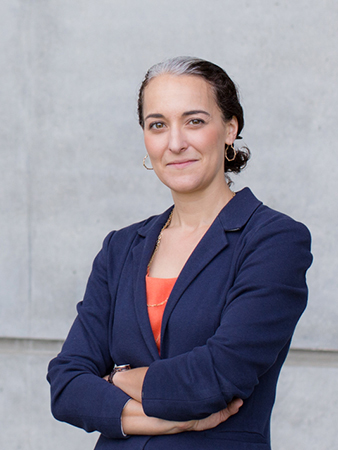
Professor Keramet Reiter’s research focus shifts from understanding solitary confinement to the reform effort that curbed it
Keramet Reiter, associate professor of criminology, law and society, spent the last decade shedding light on one of the darkest corners of U.S. prisons: long-term solitary confinement, where people spend years alone inside a small concrete block with virtually no human interaction.
In testimony before the Senate Judiciary Committee and in books like 23/7: The Rise of Pelican Bay Prison and the Rise of Long Term Solitary Confinement, Reiter raised awareness of how these facilities came to be, what they’re like for inmates, and how people get sent there.
At a recent conference about solitary confinement, Reiter and her colleagues shared a spontaneous celebratory moment. Fewer and fewer people are being kept in long-term solitary confinement today, and some states have shut down their supermax prisons -- facilities that were built for the sole purpose of housing people in solitary confinement for years or even decades. “We really weren’t expecting to see the kind of changes we’ve seen in the last few years,” says Reiter.
As those changes take place, Reiter is shifting her attention to the prison reform movement itself.
“The more I’ve done this work, the more interested I’ve become in how to bring people into the reform movement,” says Reiter, whose new article “After Solitary Confinement: A New Era of Punishment” appears in a special issue of Studies in Law, Politics and Society. “Solitary confinement is interesting to study because it’s the deep end of the system. So, as we turn to reform, I’m looking at solitary confinement specifically to see if it magnifies different areas of prison reform.”
Despite rhetoric about law and order on the national stage, most criminal justice policy is created at the state and local levels. Reiter’s new study focuses on California, Illinois and Washington — three states that have reformed their solitary confinement policies in recent years, but each in dramatically different ways.
In California, a series of class action lawsuits led to changes in procedures that must be followed before sending prisoners to “the hole” for extended periods of time. In Illinois, advocacy groups effectively pushed the state to shut down an entire supermax prison — which, interestingly, had been opened at the recommendation of a public task force appointed by the governor. But it is Washington State’s reform pathway that most interests Reiter.
“In Washington, administrators within the prison system have taken the leadership role of reforming solitary confinement,” says Reiter. This, she explains, is the exact opposite pathway of how many supermax prisons came into being, where it was often prison administrators who drove the creation and development of long-term solitary confinement facilities.
 Reiter says charismatic prison leaders in Washington have a well-recognized progressive history. There, prison administrators work with academics in criminal justice and create a culture of dialogue, of which they are quite proud.
Reiter says charismatic prison leaders in Washington have a well-recognized progressive history. There, prison administrators work with academics in criminal justice and create a culture of dialogue, of which they are quite proud.
“There’s a sense that they derive their legitimacy from their progressive reputation,” says Reiter. “Even retirees exert pressure on the Washington prison system to maintain its good reputation, and many former employees go on to do expert work in prison litigation around the country.”
Continuing in this vein of research, Reiter recently launched a more in-depth research project on Washington state, including interviews with 106 people who were in long-term solitary confinement as the state sought to drastically reduce reliance on the practice. This will be one of the first large-scale, longitudinal studies of the impact of solitary confinement.
“We hope to understand the culture of long-term solitary confinement and the lived, psychological, and medical effects,” says Reiter.
Additionally, Reiter interviewed 77 prison staff who worked at Washington supermax facilities to better understand how the experience, and the reforms, impacted their lives.
Reiter’s interest in prison reform stems from college, when she volunteered as a teacher at a local prison. “I learned more and more about the prison system, and got curious about where the policies came from, especially because some of them seemed so counter productive,” she says.
Later, Reiter worked for Human Rights Watch, where she was surprised by the lack of data available about criminal sentences and prison conditions, making it impossible for advocates to even know what policy decisions needed to be implemented. One such example was sending juveniles to prison for life without parole -- a sentence prohibited by several international laws but still practiced in the U.S. Reiter helped conduct painstaking state-by-state research to discover that more than 2,400 people convicted as children were serving life without parole in the U.S. “Having those numbers alone became a huge staple in the reform effort, and led to the chipping away of those sentences over the years.” The U.S. Supreme Court has since outlawed mandatory life without parole sentences for juveniles.
Those early lessons about the critical importance of data have stayed with Reiter and continue to influence and motivate her today. “The total, shocking lack of information made it impossible for people to know how to advocate,” says Reiter.
That’s a problem her work then, as now, aims to reform.
— by Christine Byrd